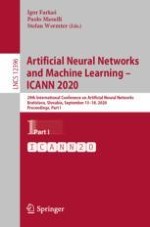2020 | OriginalPaper | Buchkapitel
Investigating Efficient Learning and Compositionality in Generative LSTM Networks
verfasst von : Sarah Fabi, Sebastian Otte, Jonas Gregor Wiese, Martin V. Butz
Erschienen in: Artificial Neural Networks and Machine Learning – ICANN 2020
Aktivieren Sie unsere intelligente Suche, um passende Fachinhalte oder Patente zu finden.
Wählen Sie Textabschnitte aus um mit Künstlicher Intelligenz passenden Patente zu finden. powered by
Markieren Sie Textabschnitte, um KI-gestützt weitere passende Inhalte zu finden. powered by
